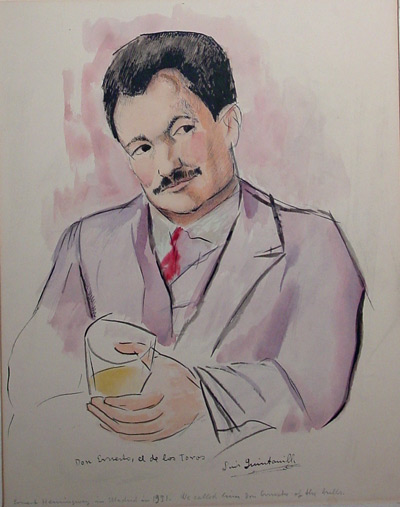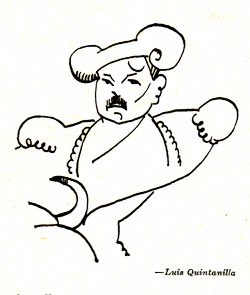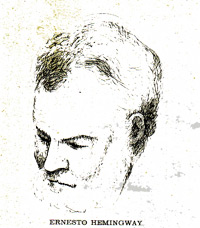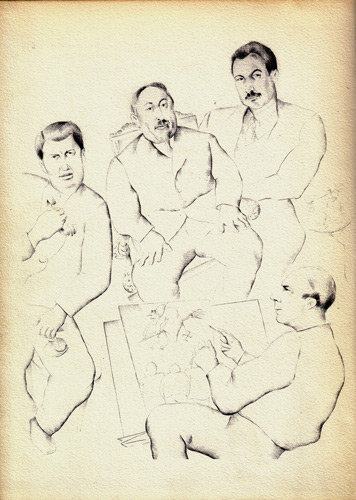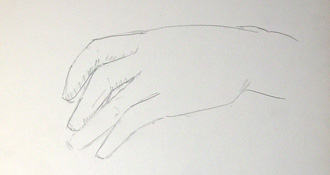Portraits of Friends
| Sidney Franklin, the American Bullfighter |
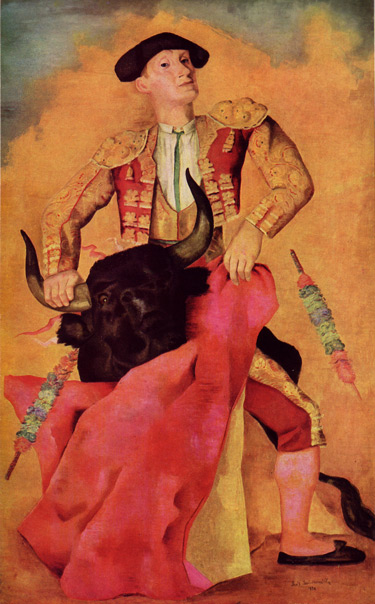 |
"And it happened that from Brooklyn came to my studio Sidney Franklin, and the studio was flooded with reds, greens, and golds, memories of Andalusia. The sun came in, we played music, we drank white wine from California with olives from Florida, and I don't know why I painted gaily the American bullfighter: The Kid From Brooklyn."
Sidney Franklin, "el nino de la sinagoga," was a capable, full matador who fought in the best bull rings in Spain. My father may have met him when Franklin accompanied Ernest Hemingway to Spain in 1937 during the civil war.
|
Family
lore has it that my father didn't like this painting, cut it in half,
along the line of the tip of the bull's nose, and painted over each
half. The original was quite large, and the reproduction on this site
comes from a faded full page photograph which appeared in Town and
County in March, 1940. |
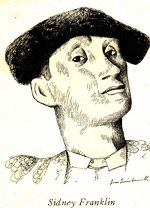 |
|
|
|
|
The
caption reads: "Ernest Hemingway in Madrid in 1931 - We called
him Don Ernesto of the bulls." Which
is the nickname that was given more than a century earlier to Goya. My
father did this 15 1/2 x 20 1/2" water color in New York, in the
1950s, from memory. In 1931 he did a portrait of Hemingway in Madrid. The portrait hung for many years above the bed in Ernest's Key West home. In 1967 it was burned up when his son Patrick's California Oakland Hills home was destroyed by fire. |
Saturday Review. July 29, 1961 |
|
Cuadernos, November 1961 This tiny illustration accompanied my father's 'recuerdo' of Hemingway after he died. It appears to have been done from life: perhaps on Ernest's last trip to Paris. |
|
Jay Allen, Elliot Paul, Hemingway, and Quintanilla
This illustration was reproduced from All the Brave, the collection of drawings of the Spanish Civil War, which the four men portrayed participated in creating. |
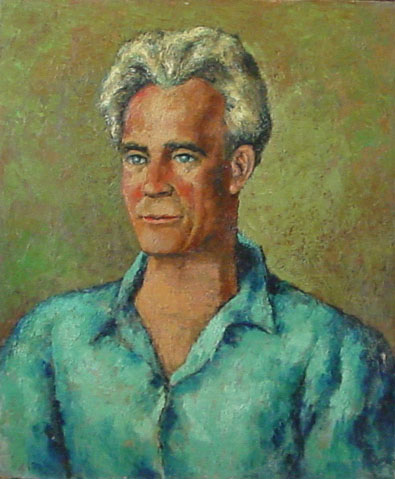 |
Ernesto el Marino (Ernest Wyatt) Oil on Canvas: 20 x 24" New York 1950s Ernest the Sailor, was the captain of a Coast Guard cutter. My father would occasionally visit his house in the country up in Massachusetts. And when Ernesto was in New York he would come to the studio.
|
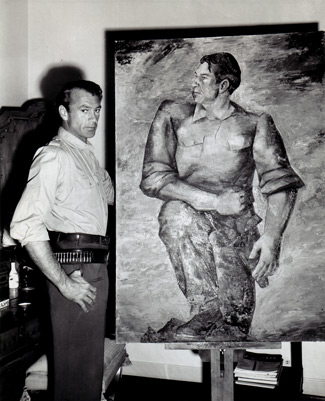 |
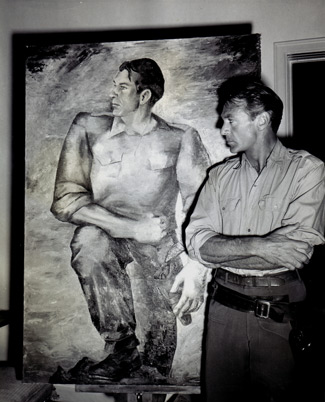 |
Gary Cooper as Robert Jordan, the hero of Hemingway's For Whom the Bell Tolls. Hollywood, March 1943. Dimensions unavailable. |
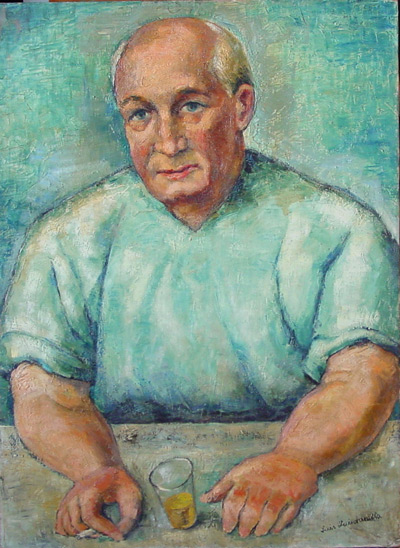
Portrait of Robert Flaherty, the film maker. 1949. Flaherty is portrayed here in a pose which was characteristic of many guests in my father's studio in New York, with a drink set before him, as he would be in conversation, seated at the large oval dining table before the large easel in the center of the studio. Oil on canvas: 22 x 30" |
 |
Study for the portrait of Robert Flaherty Pen on paper: 11 x 14" |
 |
Claude Bowers, the United States Ambassador to Spain during the Republic. It was through Bowers, in the embassy in Madrid, that my parents met. My father did this drawing in New York for Bowers' memoirs, My Mission to Spain. Ink on paper: 10 x 15" 1954 |
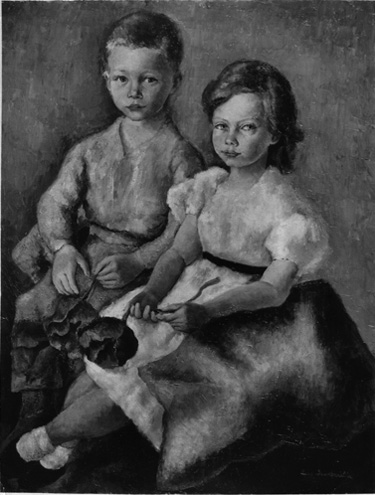 |
Karl
and Karly Zimmer. They were the children of Karl and Barbara Zimmer,
who lived in Holland. My father did this portrait of the two children
in Wassenaar in 1959. |
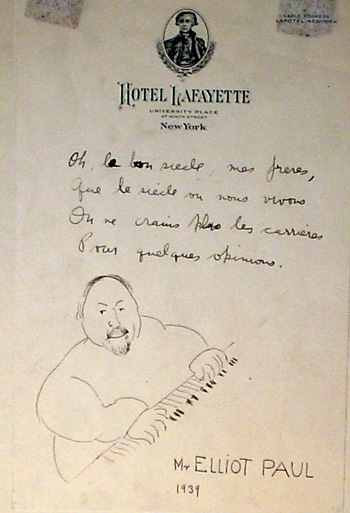 |
|
The restaurant at the Hotel Lafayette, on University Place in the heart of New York's Greenwich Village, was, I understand, quite good, with excellent French wines and food. Elliot may have been my father's best American friend. |
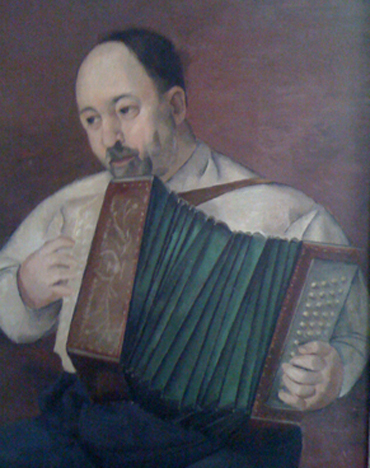 |
Elliot was an accomplished musician. My father may have done this portrait during the thirties, when Elliot lived on the island of Ibiza. It belonged to the poet Archibald MacLeash. |
Don Pablo
|
After hearing Pablo Casals perform in Barcelona in the concert he offered in 1938 during the Fascist siege of the city my father asked him to sit for his portrait. Casals agreed but, as my father tells us: "historical events in Spain and in the world separated us; he settled in France, I in North America. When I learned this winter that he was in San Juan, six hours away from Idlewild, I wrote to him that in these past nineteen years my artistic illusion to paint him had only grown. He answered that I should come at once." So in March of 1957 he went, and spent seven mornings in San Juan, Puerto Rico, painting the Maestro.
|
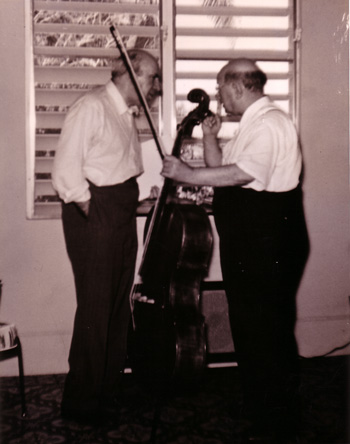 |
Sketches and Studies
(from the artist's sketchbook: 11 x 14")
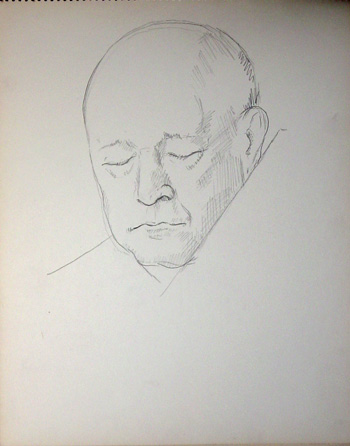 |
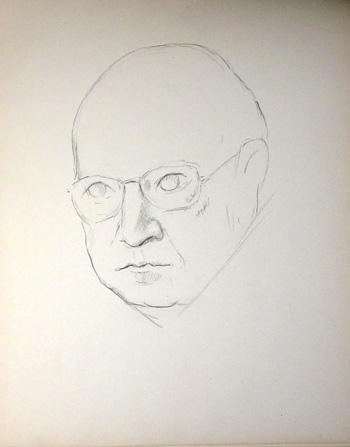 |
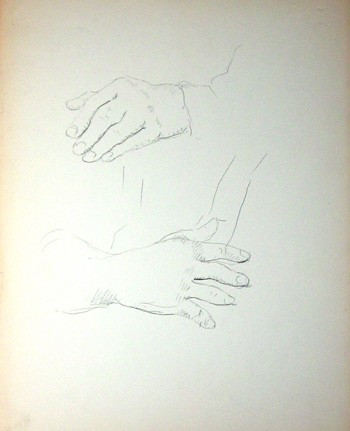 |
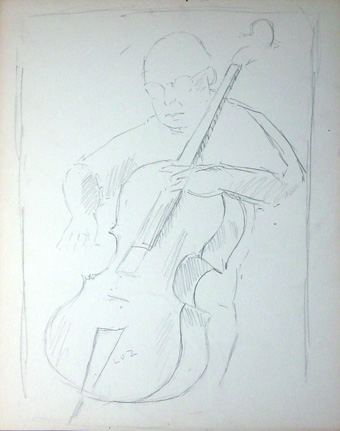 |
| A sketch on a small paper napkin, made in a restaurant. |
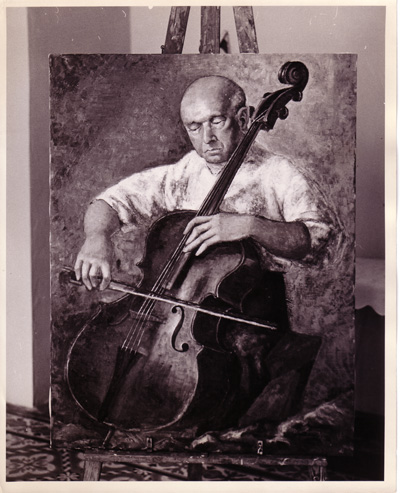 |
Casals liked his portrait, and told my mother that it was "a very important work." And he was more concerned about the appearance of his precious violoncello than in how he appeared. My father donated the portrait to the Museum of Modern Art in Madrid in the late seventies. And it may be currently found in the Reina Sofia Museum, where it has been in storage in the basement ever since. |

Jay Allen, the journalist. 1930, drawing.
Honoria Murphy
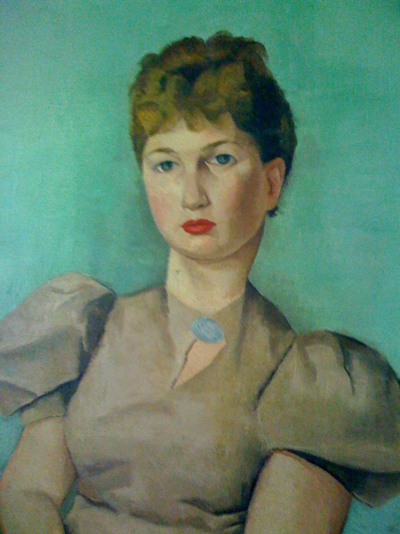 |
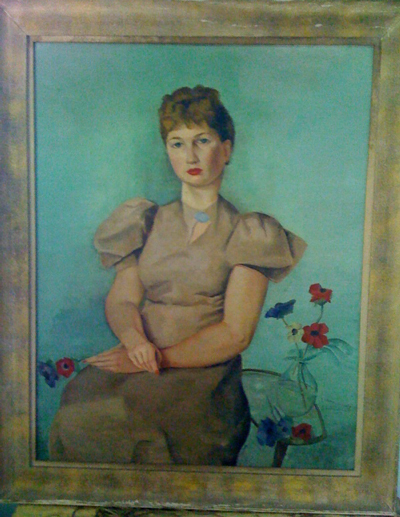 |
| The twenty one year old daughter of Sara and Gerald Murphy, my father painted this portrait in either East Hampton or New York in 1938. He was visiting New York to show his drawings of the Spanish Civil War at the Museum of Modern Art. |

